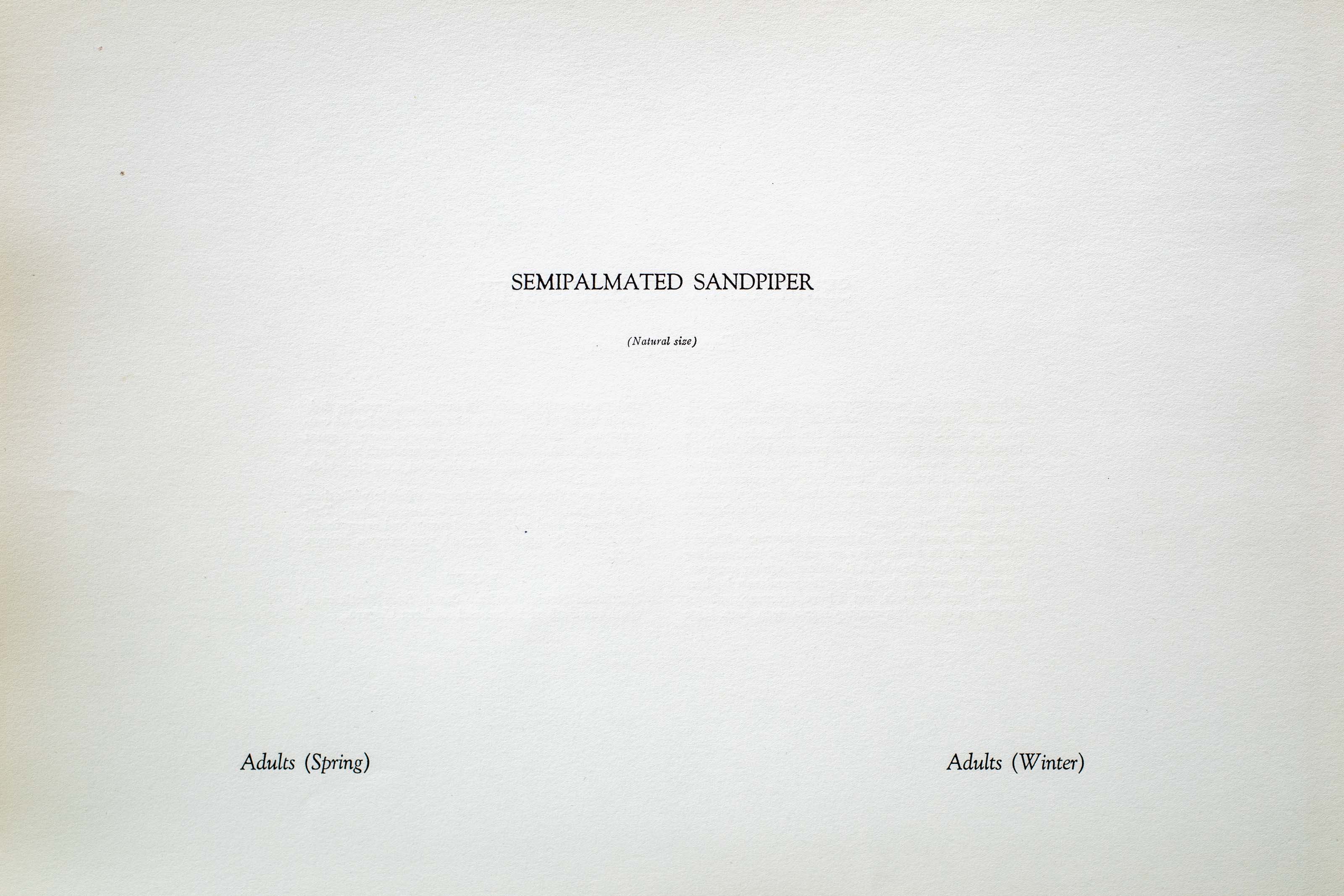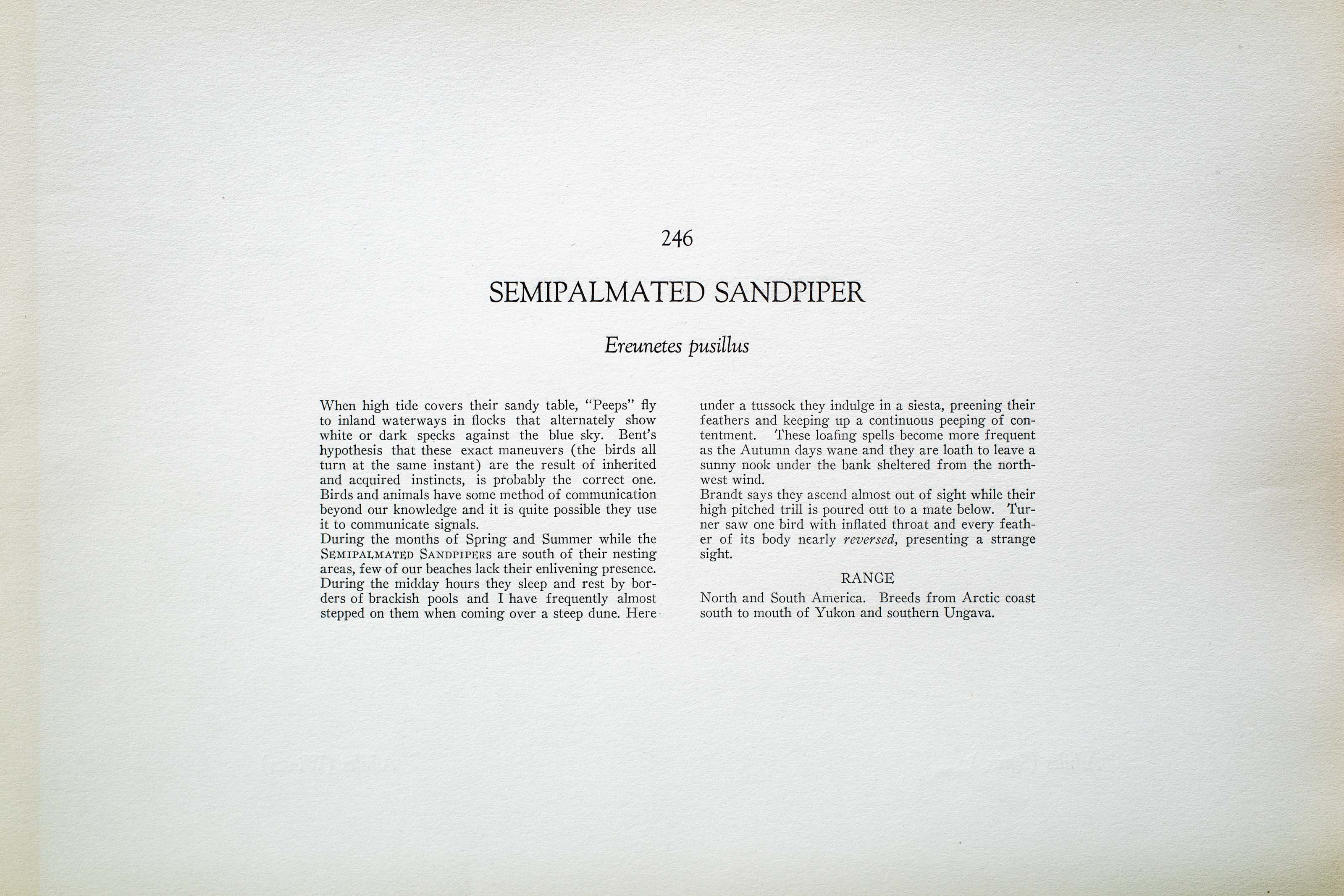






1910
1930
4
246
A team of dedicated board members, volunteers, and student interns has published every page in Volume 9. This volume includes 360 images of paintings and lyrical descriptions of birds, now available online for everyone to enjoy anywhere in the world. This is a monumental task. Each volume requires approximately 400 hours to photograph, edit, transcribe, catalog, and publish online. We need your support to complete this work.
If you're tech-savvy, have a good eye, are meticulous with details, and love structured data, please consider volunteering by emailing us at hello@rexbrasher.org.
We encourage all bird lovers and supporters to consider a monetary donation to support our mission to make Rex's work available for everyone. You can provide a one-time or recurring donation online.
When high tide covers their sandy table, "Peeps" fly to inland waterways in flocks that alternately show white or dark specks against the blue sky. Bent's hypothesis that these exact maneuvers (the birds all turn at the same instant) are the result of inherited and acquired instincts, is probably the correct one. Birds and animals have some method of communication beyond our knowledge and it is quite possible they use it to communicate signals.
During the months of Spring and Summer while the SEMIPALMATED SANDPIPERS are south of their nesting areas, few of our beaches lack their enlivening presence. During the midday hours they sleep and rest by borders of brackish pools and I have frequently almost stepped on them when coming over a steep dune. Here under a tussock they indulge in a siesta, preening their feathers and keeping up a continuous peeping of contentment. These loafing spells become more frequent as the Autumn days wane and they are loath to leave a sunny nook under the bank sheltered from the northwest wind.
Brandt says they ascend almost out of sight while their high pitched trill is poured out to a mate below. Turner saw one bird with inflated throat and every feather of its body nearly reversed, presenting a strange sight.
North and South America. Breeds from Arctic coast south to mouth of Yukon and southern Ungava.